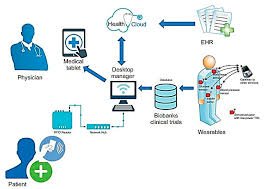
The digital transformation landscape in 2025 represents a pivotal moment where technology transcends traditional boundaries to become the cornerstone of modern business strategy. As organizations worldwide grapple with rapidly evolving market dynamics, understanding and implementing the latest digital trends has become not just advantageous, but essential for survival and growth.
Digital transformation trends are fundamentally reshaping how businesses operate, compete, and deliver value to customers. From artificial intelligence revolutionizing decision-making processes to edge computing enabling real-time data processing, these trends are creating unprecedented opportunities for organizations ready to embrace change.
The Evolution of Digital Transformation in 2025
Digital transformation has evolved far beyond simple digitization of paper processes. In 2025, it represents a comprehensive reimagining of business models, customer experiences, and operational frameworks. Organizations are discovering that successful digital transformation requires a holistic approach that integrates technology with strategic business objectives.

The current digital transformation landscape is characterized by several key factors:
Accelerated Adoption Rates: The pandemic-induced digital acceleration has normalized remote work, cloud adoption, and digital customer interactions. What once took years to implement now happens in months.
Integration Focus: Modern digital transformation emphasizes seamless integration between different technologies and business processes rather than isolated digital initiatives.
Customer-Centric Approach: Digital trends are increasingly driven by customer expectations for personalized, efficient, and secure digital experiences.
Data-Driven Decision Making: Organizations are leveraging advanced analytics and AI to transform raw data into actionable business insights.
Key Digital Transformation Trends Dominating 2025
1. Artificial Intelligence and Machine Learning Integration
Artificial intelligence stands as the most transformative digital trend of 2025. Organizations are embedding AI and machine learning capabilities across every aspect of their operations, from customer service automation to supply chain optimization.
AI in Customer Service: Companies are deploying sophisticated AI chatbots and virtual assistants that can handle complex customer inquiries with near-human accuracy. These systems learn from every interaction, continuously improving their responses and reducing resolution times.
Predictive Analytics: Machine learning algorithms are analyzing historical data patterns to predict future trends, customer behavior, and potential system failures. This predictive capability enables proactive decision-making rather than reactive responses.
AI-Powered Security: Advanced AI systems are monitoring network traffic, detecting anomalies, and responding to security threats faster than traditional security measures. Studies indicate that AI handles approximately 65% of security monitoring in modern IT environments.
Industry-Specific Applications: In healthcare, AI assists with medical diagnoses and treatment recommendations. In retail, machine learning drives demand forecasting and personalized marketing campaigns. Financial services leverage AI for fraud detection and credit scoring.
The impact of AI integration extends beyond operational efficiency. Organizations implementing comprehensive AI strategies report significant improvements in customer satisfaction, operational costs, and revenue generation.
2. Edge Computing and IoT Ecosystem Expansion

The proliferation of Internet of Things (IoT) devices has created an unprecedented demand for real-time data processing capabilities. Edge computing addresses this need by bringing computational power closer to data sources, reducing latency and improving response times.
Industrial IoT Applications: Manufacturing facilities are deploying IoT sensors throughout their operations to monitor equipment performance, predict maintenance needs, and optimize production processes. Edge computing enables immediate analysis of sensor data without the delays associated with cloud processing.
Smart City Initiatives: Urban centers are implementing IoT networks for traffic management, environmental monitoring, and public safety. Edge computing allows city systems to process traffic data in real-time, adjusting signal timing and routing recommendations instantly.
Healthcare Monitoring: Wearable devices and medical sensors generate continuous streams of patient data. Edge computing enables healthcare providers to monitor patient conditions in real-time and alert medical staff to potential emergencies immediately.
Autonomous Systems: Self-driving vehicles and autonomous drones rely on edge computing to process sensor data and make split-second decisions. The low latency requirements of these systems make edge computing essential for safe operation.
The combination of edge computing and IoT is transforming industries by enabling responsive, intelligent systems that can operate independently while maintaining connectivity to broader networks.
3. Zero Trust Security Architecture
Image suggestion: A security-focused diagram showing multiple layers of verification and protection around digital assets with user authentication checkpoints
The evolving threat landscape has made traditional perimeter-based security models obsolete. Zero Trust security architecture operates on the principle that no user or device should be trusted by default, regardless of their location or credentials.
Multi-Factor Authentication: Organizations are implementing robust authentication systems that require multiple forms of verification before granting access to sensitive systems or data.
Micro-Segmentation: Network segmentation creates isolated zones within the corporate network, limiting the potential impact of security breaches and controlling data access more precisely.
Continuous Monitoring: Advanced monitoring systems track user behavior, device activity, and network traffic continuously, identifying suspicious patterns and potential security threats in real-time.
Privileged Access Management: Zero Trust frameworks include strict controls over administrative access, ensuring that elevated privileges are granted only when necessary and monitored closely.
Data Privacy Compliance: Organizations are implementing privacy-by-design principles to ensure compliance with regulations like GDPR and India’s Personal Data Protection bill while maintaining operational efficiency.
The adoption of Zero Trust security models is driven by the increasing sophistication of cyber threats and the need to protect digital transformation investments from potential security breaches.
4. Cloud-First and Everything-as-a-Service (XaaS) Models
Cloud computing has transitioned from an optional technology to the default infrastructure choice for new digital initiatives. The XaaS model extends this concept by offering comprehensive technology solutions as on-demand services.
Multi-Cloud Strategies: Organizations are leveraging multiple cloud providers to access best-of-breed services while avoiding vendor lock-in. This approach allows companies to optimize costs and performance by selecting the most suitable cloud services for specific applications.
Hybrid Cloud Deployment: Many organizations adopt hybrid cloud models that combine public cloud services with private infrastructure, enabling them to maintain control over sensitive data while benefiting from cloud scalability.
Industry-Specific Cloud Services: Specialized cloud offerings are emerging for specific industries, such as Banking-as-a-Service (BaaS) for financial institutions and Healthcare-as-a-Service (HaaS) for medical organizations.
Cost Optimization: Cloud adoption enables organizations to convert capital expenditures into operational expenses, improving cash flow and financial flexibility. However, this shift requires careful cost management and governance to prevent unexpected expenses.
Scalability and Agility: Cloud services enable rapid scaling of computing resources in response to demand fluctuations, supporting business growth without significant infrastructure investments.
The widespread adoption of cloud and XaaS models is democratizing access to enterprise-grade technology, enabling organizations of all sizes to compete on equal footing.
5. Hybrid Work and Advanced Collaboration Technologies
Image suggestion: A split-screen image showing traditional office spaces and modern home offices connected through digital collaboration tools
The hybrid work model has fundamentally changed how organizations approach collaboration and productivity. Digital transformation trends in 2025 are heavily influenced by the need to support flexible work arrangements while maintaining operational efficiency.
Collaborative Platforms: Advanced collaboration tools integrate video conferencing, project management, and document sharing in unified platforms that support both synchronous and asynchronous work patterns.
Virtual and Augmented Reality: VR and AR technologies are gradually entering mainstream business use, enabling immersive meeting experiences and enhanced training programs for remote workers.
AI-Enhanced Communication: Communication tools now include AI-powered features like real-time transcription, language translation, and meeting summarization, improving accessibility and productivity.
Digital Workplace Design: Organizations are redesigning their digital workspaces to support hybrid work patterns, investing in tools that enable seamless transitions between remote and in-office work.
Performance Management: New approaches to performance management focus on outcomes rather than hours worked, supported by digital tools that track productivity and collaboration metrics.
The hybrid work trend is reshaping organizational culture and requiring new approaches to leadership, team building, and employee engagement.
6. Total Experience (TX) Strategy Implementation
Image suggestion: A circular diagram showing the interconnection between Customer Experience (CX), Employee Experience (EX), and User Experience (UX) with digital touchpoints
Total Experience represents a holistic approach to digital transformation that integrates customer experience, employee experience, and user experience into a unified strategy.
Unified Platform Development: Organizations are developing integrated platforms that serve both customers and employees, ensuring consistency across all touchpoints and reducing operational complexity.
Cross-Functional Teams: TX implementation requires collaboration between traditionally separate departments, breaking down silos and fostering organization-wide alignment.
Journey Mapping: Comprehensive journey mapping identifies all touchpoints in customer and employee interactions, enabling optimization of the entire experience ecosystem.
Feedback Integration: Advanced feedback systems collect and analyze input from all stakeholders, providing insights for continuous improvement of the total experience.
Personalization at Scale: TX strategies leverage AI and data analytics to deliver personalized experiences for both customers and employees, improving satisfaction and engagement.
Organizations implementing TX strategies report improved customer loyalty, employee retention, and operational efficiency compared to those focusing on isolated experience improvements.
7. Sustainability and Green IT Initiatives

Environmental sustainability has become a core component of digital transformation strategies. Organizations are leveraging technology to reduce their carbon footprint while using green IT practices to minimize the environmental impact of their digital operations.
Energy-Efficient Computing: Data centers are adopting energy-efficient technologies and renewable energy sources to reduce their environmental impact while maintaining performance standards.
Smart Resource Management: IoT sensors and AI algorithms optimize energy consumption in buildings, manufacturing facilities, and transportation systems, reducing waste and improving efficiency.
Circular Economy Models: Digital platforms are enabling circular economy initiatives by facilitating product reuse, recycling, and sustainable supply chain management.
Carbon Footprint Monitoring: Advanced analytics tools track and report environmental impact metrics, supporting compliance with sustainability regulations and corporate social responsibility goals.
Green Software Development: Software developers are adopting practices that minimize energy consumption and resource usage, particularly important for mobile and IoT applications.
The integration of sustainability into digital transformation strategies is driven by regulatory requirements, customer expectations, and the recognition that environmental responsibility is essential for long-term business success.
Industry-Specific Digital Transformation Applications
Healthcare Digital Innovation
Image suggestion: A modern healthcare facility with digital displays, IoT medical devices, and healthcare professionals using tablets and AI-assisted diagnostic tools
Healthcare organizations are leveraging digital transformation trends to improve patient outcomes, reduce costs, and enhance operational efficiency. Telemedicine platforms have become standard practice, while AI-powered diagnostic tools assist healthcare professionals in making more accurate and timely decisions.
Electronic health records (EHR) systems are integrating with IoT devices to provide real-time patient monitoring capabilities. Edge computing enables immediate analysis of patient data, alerting healthcare providers to potential emergencies before they become critical.
Manufacturing and Industry 4.0
Image suggestion: A smart factory floor with robotic systems, IoT sensors, digital displays showing real-time data, and workers using tablets to monitor automated processes
Manufacturing industries are embracing Industry 4.0 principles through comprehensive digital transformation initiatives. Smart factories utilize IoT sensors throughout their operations to monitor equipment performance, predict maintenance needs, and optimize production processes.
Digital twins create virtual representations of physical systems, enabling manufacturers to test improvements and optimize operations without disrupting actual production. AI-powered quality control systems detect defects and anomalies faster and more accurately than traditional inspection methods.
Financial Services Evolution
Financial institutions are leveraging digital transformation trends to enhance customer experiences while maintaining security and regulatory compliance. AI-powered chatbots handle routine customer inquiries, while machine learning algorithms detect fraudulent transactions in real-time.
Digital payment platforms and mobile banking applications have become essential services, requiring robust security measures and seamless user experiences. Blockchain technology is being explored for secure transaction processing and identity verification.
Retail and E-commerce Transformation
Retail organizations are implementing omnichannel strategies that seamlessly integrate online and offline shopping experiences. AI-powered recommendation engines personalize product suggestions based on customer behavior and preferences.
Inventory management systems use IoT sensors and predictive analytics to optimize stock levels and reduce waste. Augmented reality applications enable customers to virtually try products before purchasing, enhancing the online shopping experience.
Regional Perspectives: Digital Transformation in India
India’s digital transformation landscape presents unique opportunities and challenges. The country’s large population and growing internet penetration create massive markets for digital services, while government initiatives like Digital India and Make in India are driving technological adoption across industries.
Digital Payment Revolution: India’s Unified Payments Interface (UPI) has become a model for digital payment systems worldwide, demonstrating the potential for leapfrogging traditional banking infrastructure.
Agricultural Technology: AI-powered agricultural applications are providing farmers with crop recommendations, weather forecasts, and market information through mobile applications, improving agricultural productivity and incomes.
Smart Cities Development: Indian cities are implementing smart city initiatives that leverage IoT sensors, data analytics, and mobile applications to improve urban services and quality of life.
Fintech Innovation: India’s fintech sector is rapidly growing, with AI-powered credit scoring systems enabling financial inclusion for previously underserved populations.
The success of digital transformation in India demonstrates the potential for technology to drive economic growth and social development in emerging markets.
Challenges and Considerations in Digital Transformation
Technical Challenges
Organizations implementing digital transformation initiatives face numerous technical challenges that require careful planning and execution.
Legacy System Integration: Many organizations struggle to integrate new digital technologies with existing legacy systems, requiring significant planning and potentially costly system upgrades.
Data Quality and Management: Effective digital transformation requires high-quality, well-organized data. Organizations must invest in data governance and management practices to ensure their digital initiatives are built on solid foundations.
Cybersecurity Risks: Increased digital connectivity creates new security vulnerabilities that must be addressed through comprehensive security strategies and ongoing monitoring.
Technical Skill Gaps: The rapid pace of technological change creates skill gaps that organizations must address through training programs and strategic hiring.
Organizational Challenges
Change Management: Digital transformation requires significant organizational change, including new processes, roles, and cultural shifts that can be challenging to implement.
Leadership Alignment: Successful digital transformation requires strong leadership commitment and alignment across all levels of the organization.
Resource Allocation: Digital transformation initiatives require significant financial and human resources, requiring careful planning and prioritization.
Measuring Success: Organizations must develop appropriate metrics and key performance indicators to measure the success of their digital transformation efforts.
Future Outlook: Emerging Digital Trends
As we look beyond 2025, several emerging trends are likely to shape the future of digital transformation:
Quantum Computing: While still in early stages, quantum computing has the potential to revolutionize data processing and cryptography, requiring organizations to prepare for its eventual mainstream adoption.
Advanced AI and Machine Learning: AI capabilities will continue to evolve, with more sophisticated natural language processing, computer vision, and predictive analytics becoming standard business tools.
6G Connectivity: The next generation of wireless technology will enable new applications and use cases that are currently impossible with existing connectivity limitations.
Blockchain Integration: Blockchain technology will likely find new applications in supply chain management, digital identity, and secure transaction processing.
Metaverse and Virtual Worlds: As virtual reality and augmented reality technologies mature, new digital experiences and business models will emerge.
Organizations that stay informed about these emerging trends and begin preparing for their potential impact will be better positioned to maintain competitive advantages in the future.
Frequently Asked Questions (FAQs)
What are the most important digital transformation trends for 2025?
The most critical digital transformation trends for 2025 include artificial intelligence and machine learning integration, edge computing with IoT expansion, Zero Trust security architecture, cloud-first strategies, hybrid work enablement, Total Experience (TX) implementation, and sustainability-focused green IT initiatives. These trends are interconnected and work together to create comprehensive digital transformation strategies.
How is artificial intelligence changing business operations in 2025?
AI is revolutionizing business operations by enabling predictive analytics, automating customer service through sophisticated chatbots, optimizing supply chain management, and enhancing cybersecurity through intelligent threat detection. Companies are integrating AI into every aspect of their operations, from decision-making processes to customer interactions, resulting in improved efficiency, cost reduction, and better customer experiences.
What is Zero Trust security and why is it important for digital transformation?
Zero Trust security is a cybersecurity model that operates on the principle of “never trust, always verify.” It requires verification for every user and device attempting to access network resources, regardless of their location or credentials. This approach is crucial for digital transformation because it protects against modern cyber threats, supports remote work environments, and ensures data privacy compliance while enabling secure digital innovation.
How do edge computing and IoT work together in digital transformation?
Edge computing and IoT work together by bringing data processing capabilities closer to IoT devices, reducing latency and enabling real-time decision-making. IoT sensors collect data from physical environments, while edge computing processes this data locally, allowing for immediate responses without relying on cloud connectivity. This combination is essential for applications like autonomous vehicles, smart manufacturing, and real-time healthcare monitoring.
What is Total Experience (TX) and how does it differ from traditional customer experience approaches?
Total Experience (TX) is a holistic strategy that integrates customer experience (CX), employee experience (EX), and user experience (UX) into a unified approach. Unlike traditional approaches that focus on individual experience types separately, TX recognizes that all experiences are interconnected and affect each other. This strategy leads to better overall satisfaction, improved loyalty, and enhanced business performance.
How can small and medium businesses benefit from digital transformation trends?
Small and medium businesses can benefit from digital transformation trends through cloud-based solutions that provide access to enterprise-grade technologies without significant upfront investments. SaaS platforms offer AI-powered tools, collaboration systems, and analytics capabilities that were previously only available to large corporations. These businesses can also leverage digital marketing, e-commerce platforms, and automated customer service to compete more effectively in digital markets.
What role does sustainability play in digital transformation strategies?
Sustainability plays an increasingly important role in digital transformation strategies as organizations seek to reduce their environmental impact while leveraging technology for business growth. Green IT practices, energy-efficient computing, smart resource management through IoT, and circular economy models enabled by digital platforms are all components of sustainable digital transformation. Companies are also using technology to monitor and report their environmental impact more accurately.
How is digital transformation different in India compared to other markets?
Digital transformation in India is characterized by unique factors such as the country’s large population, growing internet penetration, government initiatives like Digital India, and the need to address diverse socioeconomic conditions. India has seen remarkable success in digital payments through UPI, fintech innovation for financial inclusion, and agricultural technology applications. The country’s approach often involves leapfrogging traditional infrastructure to implement cutting-edge digital solutions.
What are the biggest challenges organizations face when implementing digital transformation?
The biggest challenges include legacy system integration, cybersecurity risks, technical skill gaps, change management, leadership alignment, resource allocation, and measuring success. Organizations must address these challenges through comprehensive planning, stakeholder engagement, employee training, and gradual implementation strategies that allow for learning and adaptation.
How can organizations prepare for future digital transformation trends?
Organizations can prepare for future digital transformation trends by fostering a culture of continuous learning and adaptation, investing in employee upskilling, staying informed about emerging technologies, building flexible and scalable technology infrastructure, and developing partnerships with technology providers and innovation partners. Regular assessment of digital maturity and strategic planning for technology adoption are also essential.
What is the ROI of digital transformation initiatives?
The ROI of digital transformation initiatives varies by organization and implementation scope, but studies show that companies with comprehensive digital transformation strategies typically experience improved operational efficiency, reduced costs, enhanced customer satisfaction, increased revenue through new digital channels, and better competitive positioning. Measuring ROI requires tracking specific KPIs related to business objectives and comparing performance before and after implementation.
How do hybrid work models impact digital transformation strategies?
Hybrid work models significantly impact digital transformation strategies by requiring organizations to invest in collaboration technologies, cloud infrastructure, cybersecurity measures for remote access, and digital workplace tools. These models also drive the need for new performance management approaches, employee engagement strategies, and cultural changes that support flexible work arrangements while maintaining productivity and collaboration.
What is the difference between digitization and digital transformation?
Digitization refers to converting analog information into digital format, while digital transformation involves comprehensive changes to business models, processes, and customer experiences using digital technologies. Digitization is often a component of digital transformation, but digital transformation encompasses broader strategic changes that leverage technology to create new value propositions and competitive advantages.
How can organizations ensure successful digital transformation implementation?
Successful digital transformation implementation requires strong leadership commitment, clear strategic vision, employee engagement and training, phased implementation approaches, regular measurement and adjustment, partnerships with technology providers, and focus on both technical and organizational change management. Organizations should also start with pilot projects to test and refine their approaches before full-scale implementation.
What are the key metrics for measuring digital transformation success?
Key metrics for measuring digital transformation success include customer satisfaction scores, employee productivity metrics, operational efficiency indicators, revenue from digital channels, cost reduction achievements, time-to-market improvements, security incident reduction, and sustainability impact measurements. Organizations should select metrics that align with their specific business objectives and transformation goals.
Taking Action: Your Digital Transformation Journey Starts Now
The digital transformation trends of 2025 represent more than technological upgrades—they represent fundamental shifts in how businesses operate, compete, and create value. Organizations that embrace these trends proactively will position themselves for long-term success, while those that delay may find themselves struggling to catch up in an increasingly digital marketplace.
Start with Assessment: Begin your digital transformation journey by conducting a comprehensive assessment of your current digital maturity. Identify gaps in areas such as AI adoption, cloud infrastructure, cybersecurity posture, and digital customer experience capabilities.
Prioritize Based on Impact: Focus on digital transformation trends that align most closely with your strategic business objectives. If customer engagement is your priority, invest in AI-powered personalization and Total Experience strategies. If operational efficiency is paramount, focus on IoT implementation and edge computing solutions.
Build Internal Capabilities: Invest in employee training and development to ensure your team can effectively implement and manage new digital technologies. Consider partnering with educational institutions or technology providers to develop internal expertise.
Start Small, Scale Fast: Begin with pilot projects that demonstrate value and build momentum for broader digital transformation initiatives. Use these pilots to learn, adjust your approach, and build organizational confidence in digital change.
Measure and Iterate: Establish clear metrics for success and regularly assess your progress. Be prepared to adjust your strategies based on results and changing market conditions.
The digital transformation landscape will continue to evolve rapidly, and staying ahead requires continuous learning, adaptation, and innovation. By embracing the trends outlined in this article and taking decisive action, your organization can thrive in the digital economy of 2025 and beyond.
Ready to accelerate your digital transformation journey? Connect with our expert team to develop a customized strategy that aligns with your business objectives and leverages the latest digital transformation trends. Contact us today to schedule a consultation and take the first step toward digital excellence.

